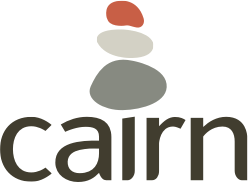In a story about equity and inclusion, Professor Richard Lapchick, Founder of the Institute of Sports and Justice, uses the “huddle” as a metaphor for communities that care about all’s needs.The huddle in sports is when teammates and like-minded individuals gather to share the game plan, congratulate each other, or gain encouragement for the next play.The huddle is an environment that accepts all, with an understanding that those surrounding each other have sacrificed for each other.
This story resonated with me as I traveled to Portland, Oregon to attend the Center of Equity and Inclusion Facilitator Intensive. Upon arrival to the 5-day facilitator training, our cohort read excerpts from My Grandmother’s Hands: Racialized Trauma and the Pathway to Mending our Hearts and Bodies by Resmaa Menakem and Mindful of Race: Transforming from the Inside Out by Ruth King.These books dive into the internal strife that is trauma through racism. These traumas are internal, with psychosocial and physical effects on bodies affected by racism. The literature pushed me to consider our work with Health and Physical Education, using sports and physical activity as a tool to eradicate internalized trauma and racism experienced by students in our communities.With my wheels turning, I was led in deep conversations and intentional activities by the Co-Founder of CEI, Hanif Fazal, and his team.
This CEI training was different from an average training session. Our tasks often centered around our own story surrounding racial equity and how it impacts our relationships and conversations. It is a special privilege to be in environments that give you space to reflect on why race equity work matters to you personally. I was able to listen to and understand black, brown, and white professionals from nonprofits, commercial companies, and consulting firms as they navigate racial equity work. As facilitators of EDI, Hanif instilled that our goal is not to be combative but to use questions that were nonwhite centered. We should be tailoring environments that protect the right to learn. With this technique, those who are resisting are tasked with answering questions and having to battle with their own thoughts and biases. I thoroughly enjoyed the interwoven activities that got classmates moving around and interacting through questions or even singing love songs together. A key understanding I received from this training was the power and significance of establishing agreements to create environments for listening and learning to know. With these agreements, we can move off of them to understand the structure of DEI in your organization or have conversations that focus on black and brown needs instead of white-centered approaches. Hanif and his staff equipped us to approach issues with transformative lends while providing transactional solutions. With this concept, movements within our organizations regarding DEI have to use adaptive methods that require changes in values, beliefs, or roles. This approach adds shared responsibility for resistors to work through their problem of racism and not rely on those impacted by systemic racism and trauma.

The Center of Equity and Inclusion facilitated well-structured, intentional training that gives space to be grounded, stretched, and replenished. As we were wrapping up the week, Hanif asked me how I liked the training. I responded, “ I wish more black and brown people were given training on how to navigate white supremacy”. He agreed that people of color should create spaces to learn and heal, and also that counterparts should share beliefs and healing amongst themselves for us to collectively make impact in racial equity. One of the activities led to me winning his debut book, “An Other World: The Fight for Freedom, Joy and Belonging”. Hanif ended the week by reading an excerpt from his book that focused on joy. My wish is that communities who work in racial equity, grab onto the fruit of joy as we journey through tough but necessary work. Through joy, we can create huddles of people that care and sacrifice for the best outcome for all.
-Sterling Ta’Bon MSPH

Leave a Reply